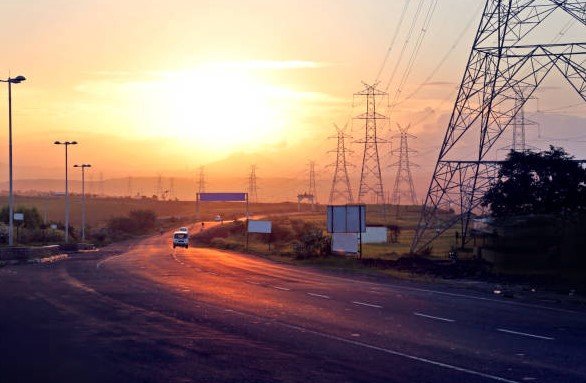India’s government is weighing a massive $12 billion bailout to rescue debt-strapped state power distribution companies. This move, set for possible reveal in the February 2025 budget, pushes states toward privatization to fix long-standing inefficiencies in the energy sector.
Background on India’s Power Sector Challenges
State-run power distributors in India have piled up huge debts over years, hurting the nation’s energy supply chain. These companies often lose money due to outdated systems, theft, and subsidies that keep prices low for voters.
Experts say the total debt for these firms now tops 6 lakh crore rupees, based on recent government reports. This burden slows down India’s goal to meet rising electricity needs from factories and homes. Past efforts, like a 2012 bailout, gave short-term relief but failed to solve core problems like poor management.

The push comes as India ramps up renewable energy, with solar and wind projects growing fast. Yet, weak distribution networks block progress, leaving many areas with blackouts.
Key Details of the Proposed Bailout
The plan offers more than 1 trillion rupees in aid, equal to about $12 billion at current rates. Officials from the Power Ministry and Finance Ministry are finalizing terms, with talks ongoing as of late October 2025.
This bailout targets the heart of India’s energy woes by linking funds to big changes. It builds on earlier reforms, like the 2023 push for smarter grids, but goes further by demanding private involvement.
Sources close to the matter say the aid could roll out in phases, starting next fiscal year. This fits with Prime Minister Narendra Modi’s drive for economic growth, aiming to boost power access for India’s 1.4 billion people.
Conditions for States to Access Funds
To get the money, states must take bold steps toward privatization or market listing. This means handing over control or opening up to investors, a shift from government-only operations.
Here are the main requirements:
- Privatize utilities and transfer managerial control to private firms.
- List companies on a stock exchange if keeping some state oversight.
- Ensure private players supply at least 20% of the state’s total power use.
- States must shoulder part of the existing debt load.
These rules aim to bring in fresh capital and better tech. For example, states can form new firms and sell 51% equity for long-term loans, or sell 26% of existing ones for shorter aid.
Two Main Options for Privatization
The Power Ministry’s plan gives states clear paths to reform. Each option ties aid to real changes, with timelines to keep things moving.
| Option | Key Features | Benefits | Timeline |
|---|---|---|---|
| Full Privatization | Create new company, divest 51% equity to private buyers | Access to 50-year interest-free loans, plus low-interest central funds for 5 years | Immediate setup, with changes in 1-2 years |
| Partial Privatization | Sell up to 26% of existing state firm to investors | Low-interest loans from center for 5 years | Must complete sale within 3 years |
| Listing Alternative | Keep control but list on stock exchange | Similar low-interest aid, no full handover | Listing required within 3 years |
This table shows how states can pick based on their needs. The goal is to cut losses, which hit 90,000 crore rupees last year alone.
Some states, like those in the south, have tested private models with success. Others worry about job losses or higher bills for users.
Potential Impacts on Economy and Consumers
This reform could transform India’s power landscape, making it more reliable for businesses and homes. With energy demand expected to double by 2030, efficient distributors are key to growth.
On the upside, privatization might lower theft and improve billing, cutting waste. Private firms often bring smart meters and faster repairs, as seen in Delhi’s privatized zones.
But challenges remain. Critics fear higher tariffs for poor families, sparking protests. Unions oppose job cuts, and some states resist losing control over a vital service.
Recent events, like the 2024 coal shortages, highlight the urgency. The plan also aligns with India’s net-zero goals by 2070, encouraging green energy ties.
Global Context and Future Outlook
India’s move mirrors bailouts in other nations, like Brazil’s power reforms in the 1990s that boosted output. Globally, private investment in energy has surged, with $2.8 trillion spent worldwide in 2024 on clean tech.
Looking ahead, success depends on state buy-in. If rolled out, this could slash debts and attract foreign funds, aiding Modi’s vision for a $5 trillion economy.
Experts predict more details in the upcoming budget, with pilot projects in willing states. This bailout isn’t just cash; it’s a step toward a modern power system.
What do you think about this power sector shake-up? Share your views in the comments and spread the word to keep the conversation going.
